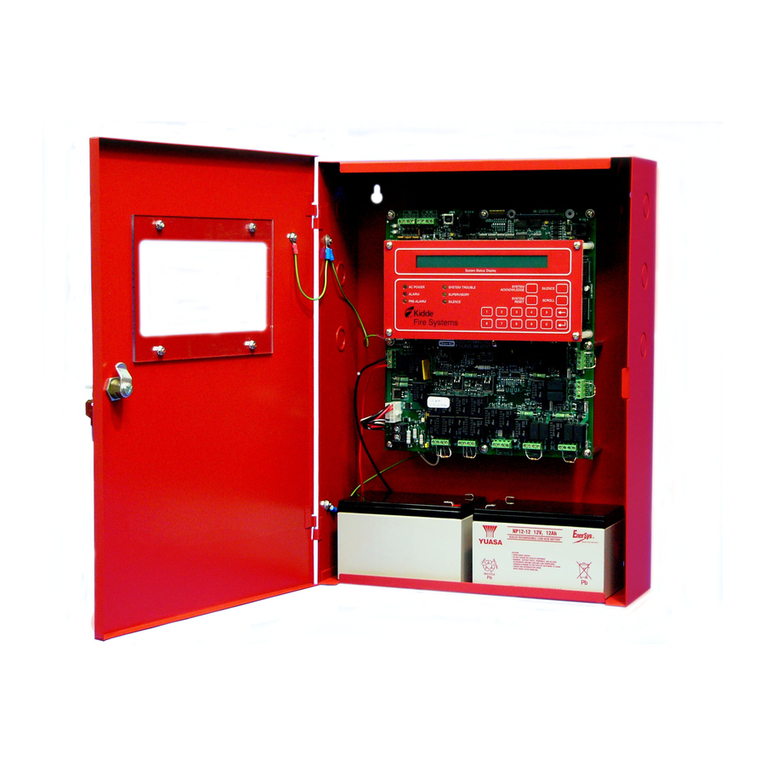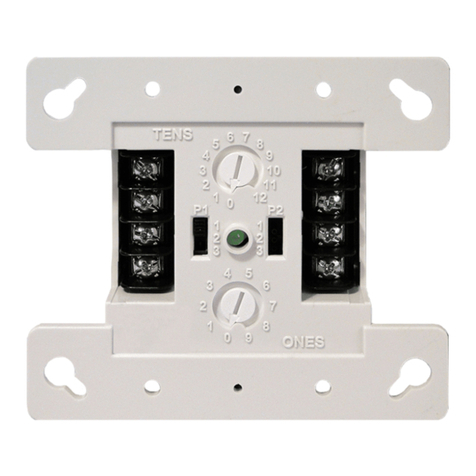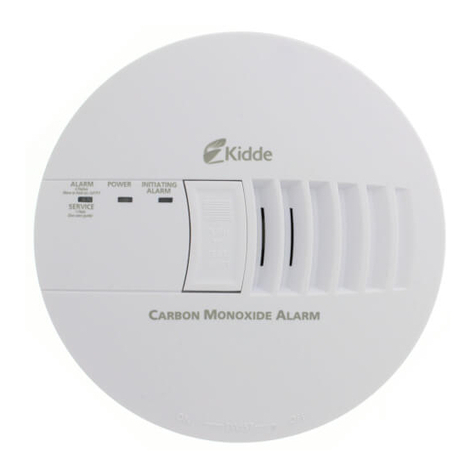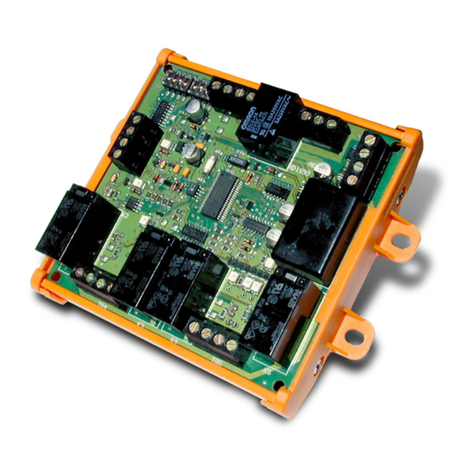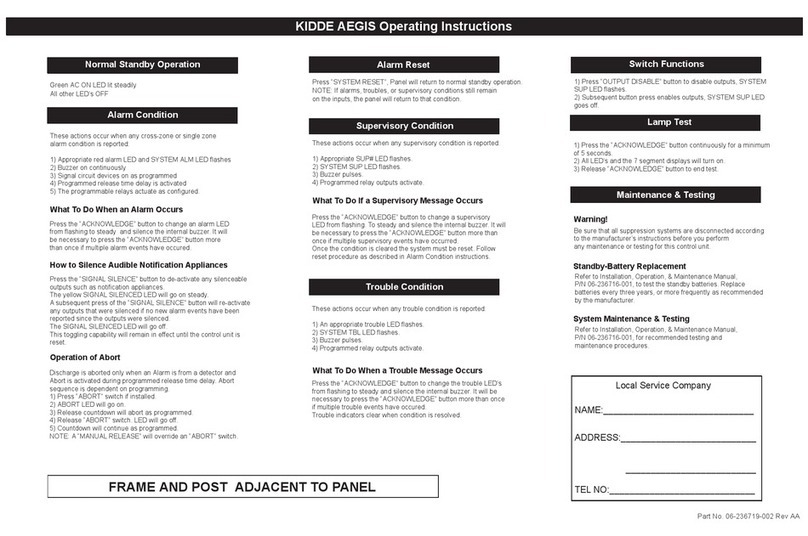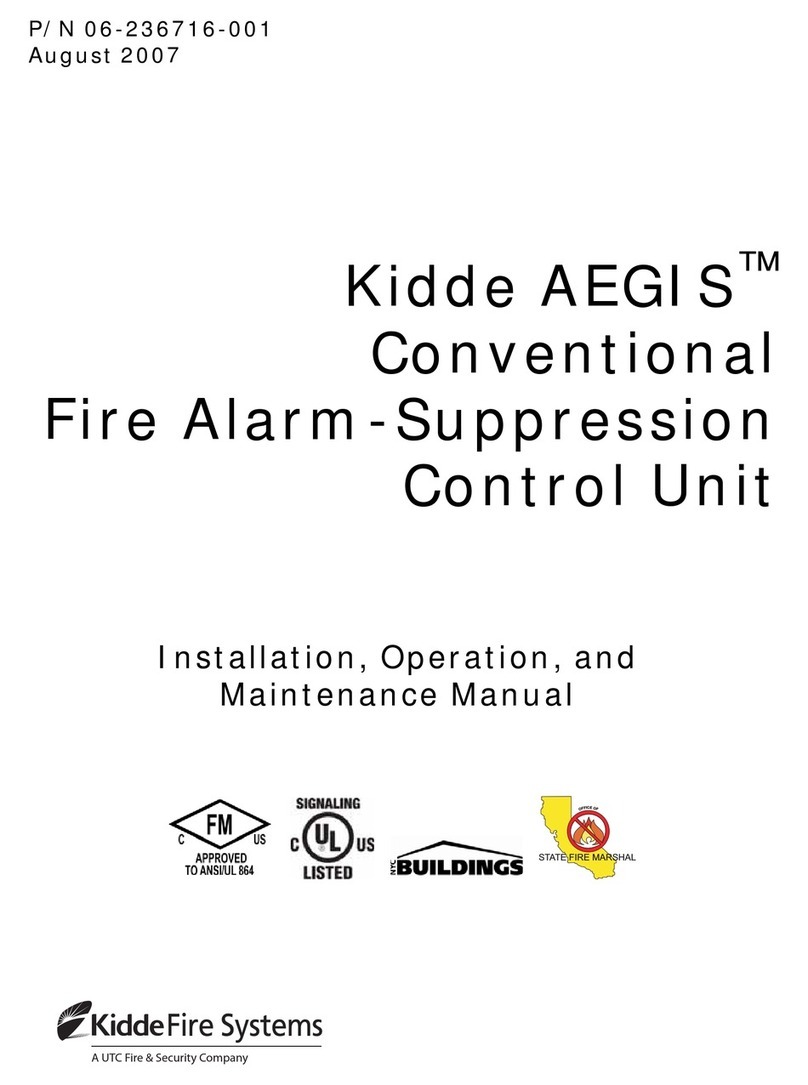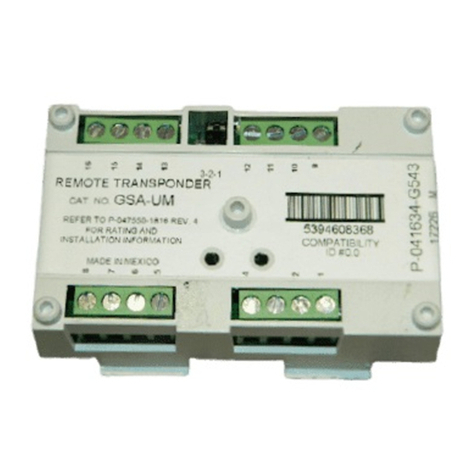
© 2020 Carrier 1 / 2 P/N 3101080-EN • REV 006 • ISS 19OCT20
FX-IDC1A Analog Class A Single
Input Module Installation Sheet
Operation
The module is an analog addressable device used to connect a
normally open, alarm, supervisory, or monitor type dry contact initiating
device circuit (IDC) to a control panel. This module is designed for
Class A circuit operation.
The device address is set using the two rotary switches located on the
front of the module. One device address is required.
The device can be preset for alarm or supervisory operation using the
slide switch located on the front of the module. The module can also
be configured for other device types through front panel programming
or the configuration utility. The configuration utility is also used to
program the device.
Slide switch operation
The following slide switch settings determine the operation of the
module. Setting the initial slide switch position is generally performed
during module installation. This setting can be changed while the
system is operating, but the change must be confirmed through front
panel programming.
Table 1: Slide switch settings
Operation Device type description [1]
Alarm Alarm latching: Configures the module for
normally open dry contact initiating devices.
When the NO input contact of an initiating
device is closed, an alarm signal is sent to
the control panel and the alarm condition is
latched at the module. (Factory default)
Not used
Supervisory Supervisory nonlatching US marketplace
Supervisory latching Canadian marketplace
Nonlatching: Configures the module for
normally open dry contact initiating devices.
When the NO input contact of an initiating
device is closed, a supervisory signal is sent
to the control panel and the supervisory
condition is not latched at the module.
Latching: Configures the module for normally
open dry contact initiating devices. When the
NO input contact of an initiating device is
closed, a supervisory signal is sent to the
control panel and the supervisory condition is
latched at the module.
[1] Additional device types are available through front panel
programming or the configuration utility. Refer to the applicable control
panel technical reference manual.
Figure 1: Slide switch
LED operation
The module provides a bicolor LED that shows its status.
Normal: Green LED flashes
Alarm/active: Red LED flashes
Installation
Install and wire this device in accordance with applicable national and
local codes, ordinances, and regulations.
WARNINGS
• This module will not operate without electrical power. As fires
frequently cause power interruption, you should discuss further
safeguards with your local fire protection specialist.
• This module does not support conventional smoke detectors.
Note: The module is shipped from the factory as an assembled unit; it
contains no user-serviceable parts and should not be disassembled.
To install the module:
1. Verify that all field wiring is free of opens, shorts, and ground
faults.
2. Make all wiring connections shown in Figure 4.
3. Set the module address. Refer to the panel technical reference
manual for a list of valid addresses.
Use a screwdriver to adjust the two rotary switches on the front of
the module. Set the TENS rotary switch (0 through 12) for the 10s
and 100s digit and the ONES rotary switch for the 0 through 9
digit. For example: device address 21, set the TENS rotary switch
to 2 and set the ONES rotary switch to 1 (see Figure 2).
4. Set slide switch P1 to the appropriate setting. Refer to Figure 1.
5. Mount the module on the electrical box using the screws provided
with the electrical box.
6. Mount the wall plate on the module using the hardware shown in
Figure 3.
Figure 2: Module address
(1) Insert screwdriver here
TB1
TENS
ONES
TB2
12
11
10
9
4
3
2
10
8
567
09
18
27
3 6
45
P1
1
3
2
(1)
